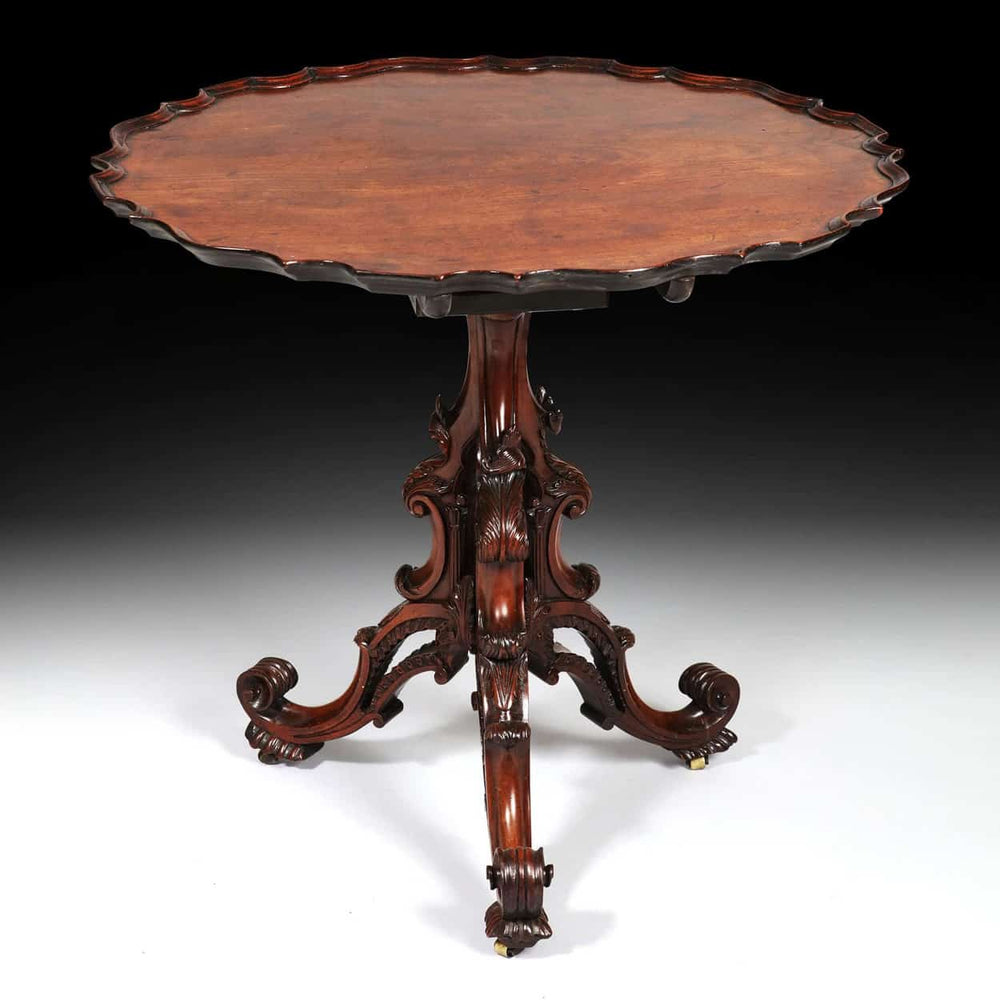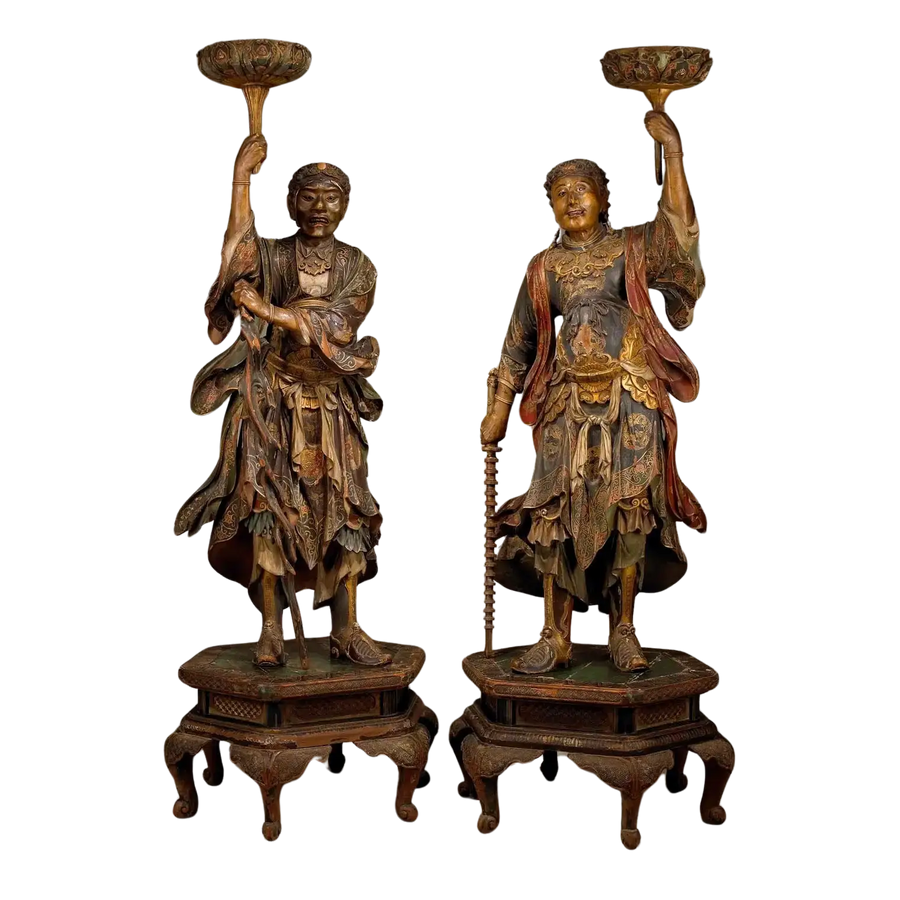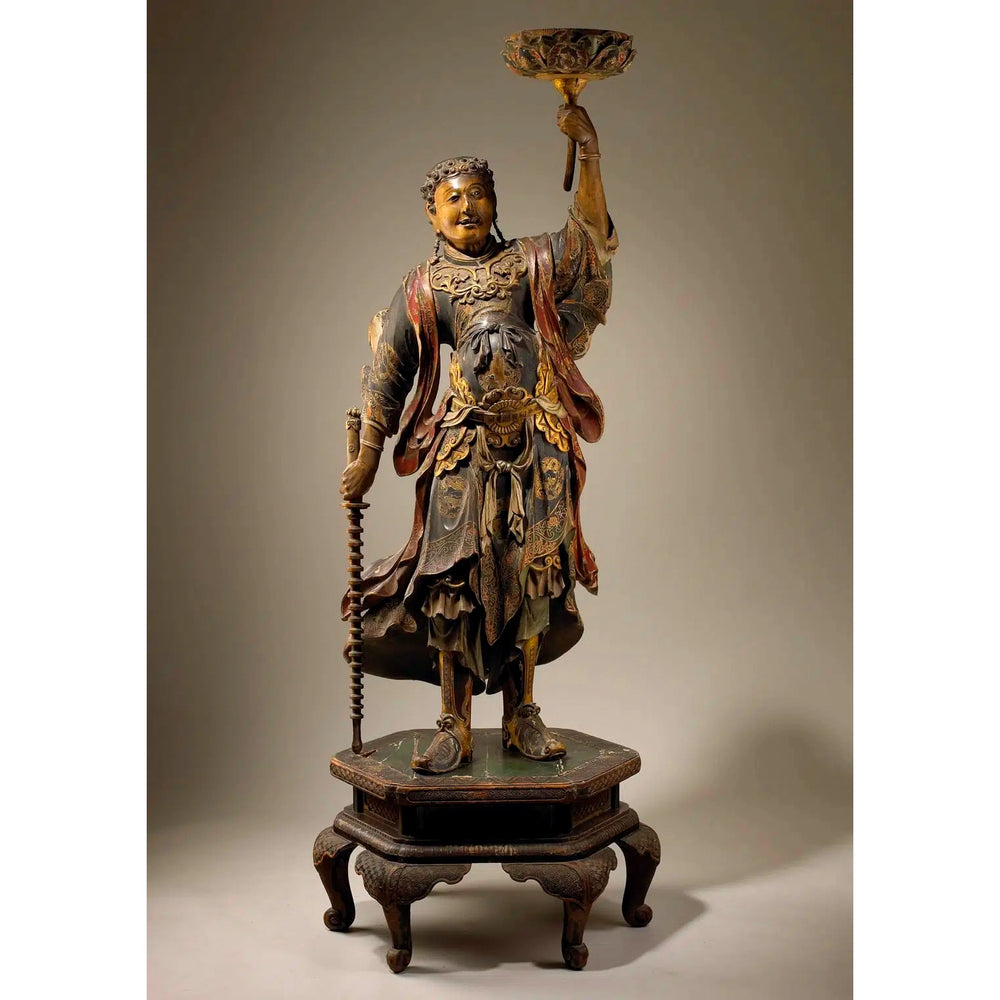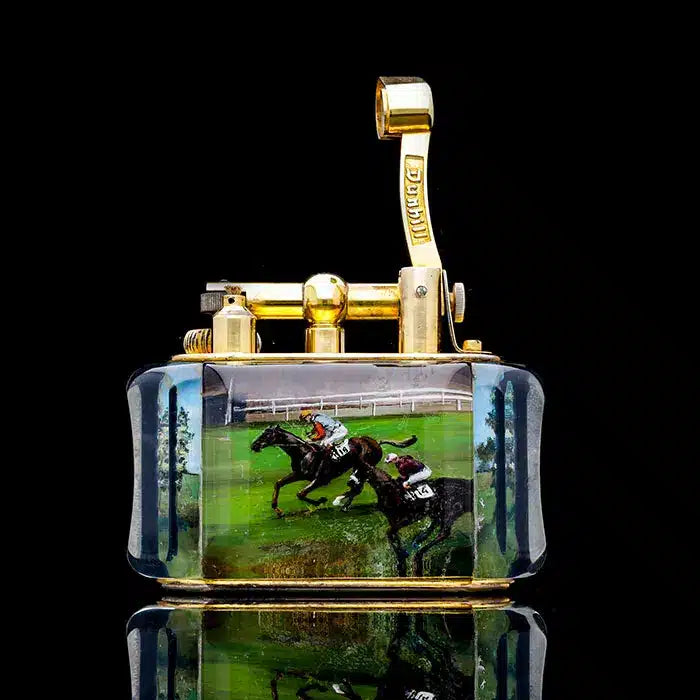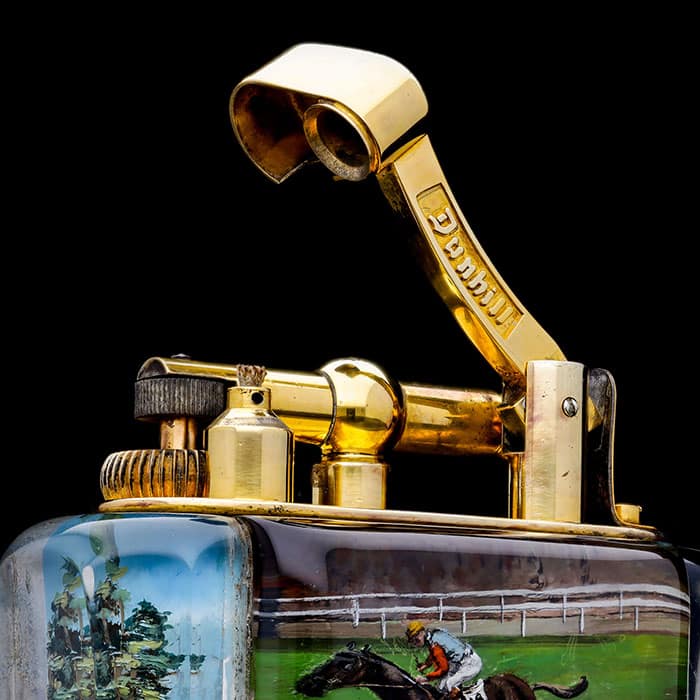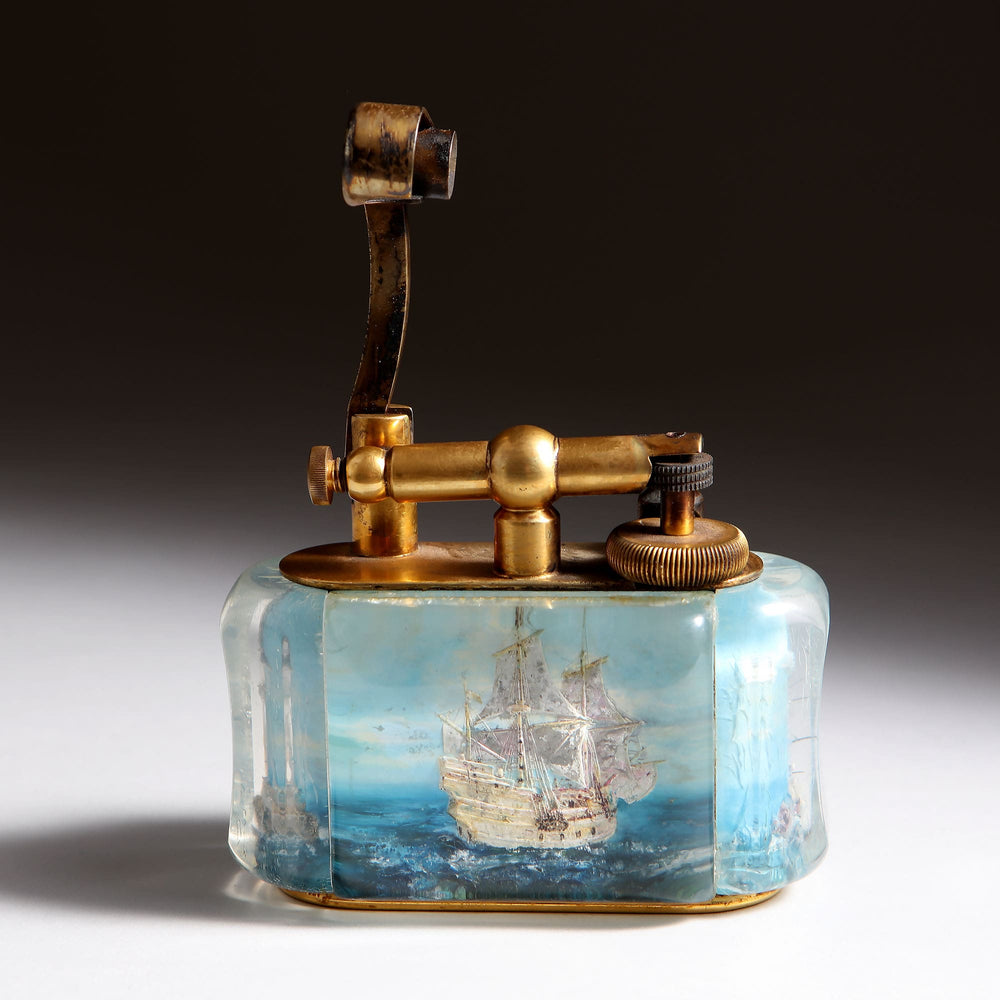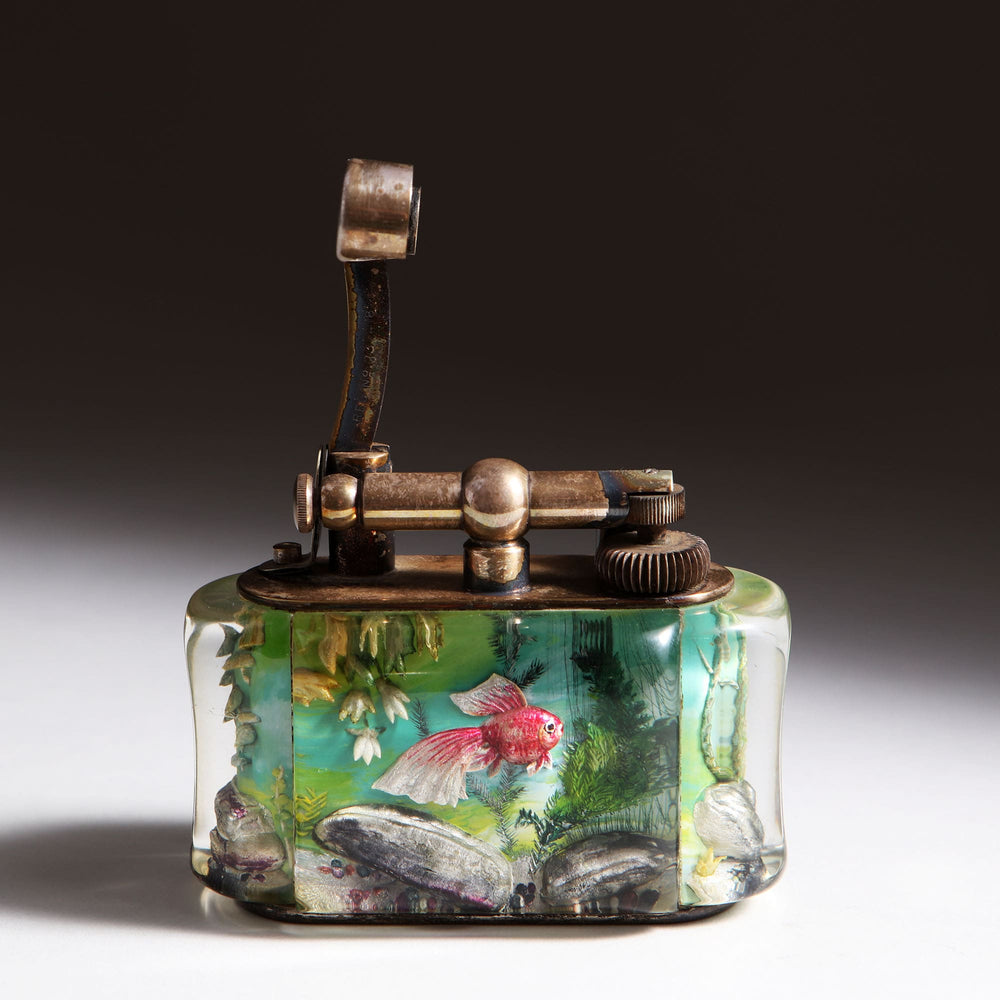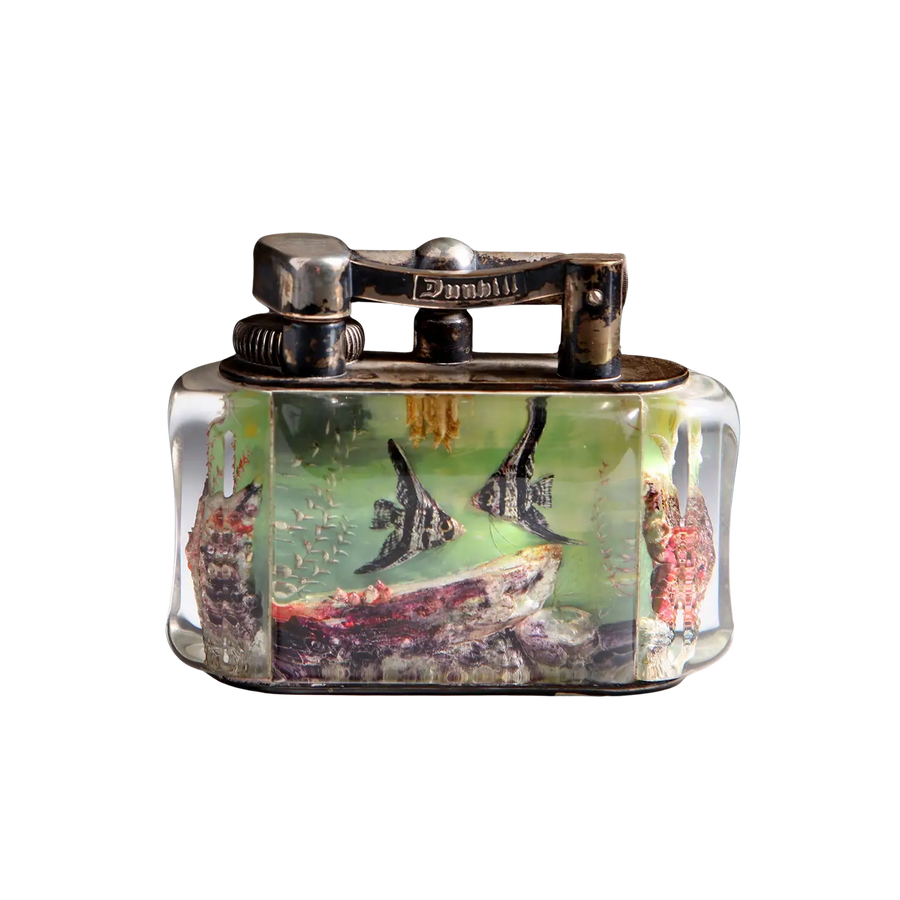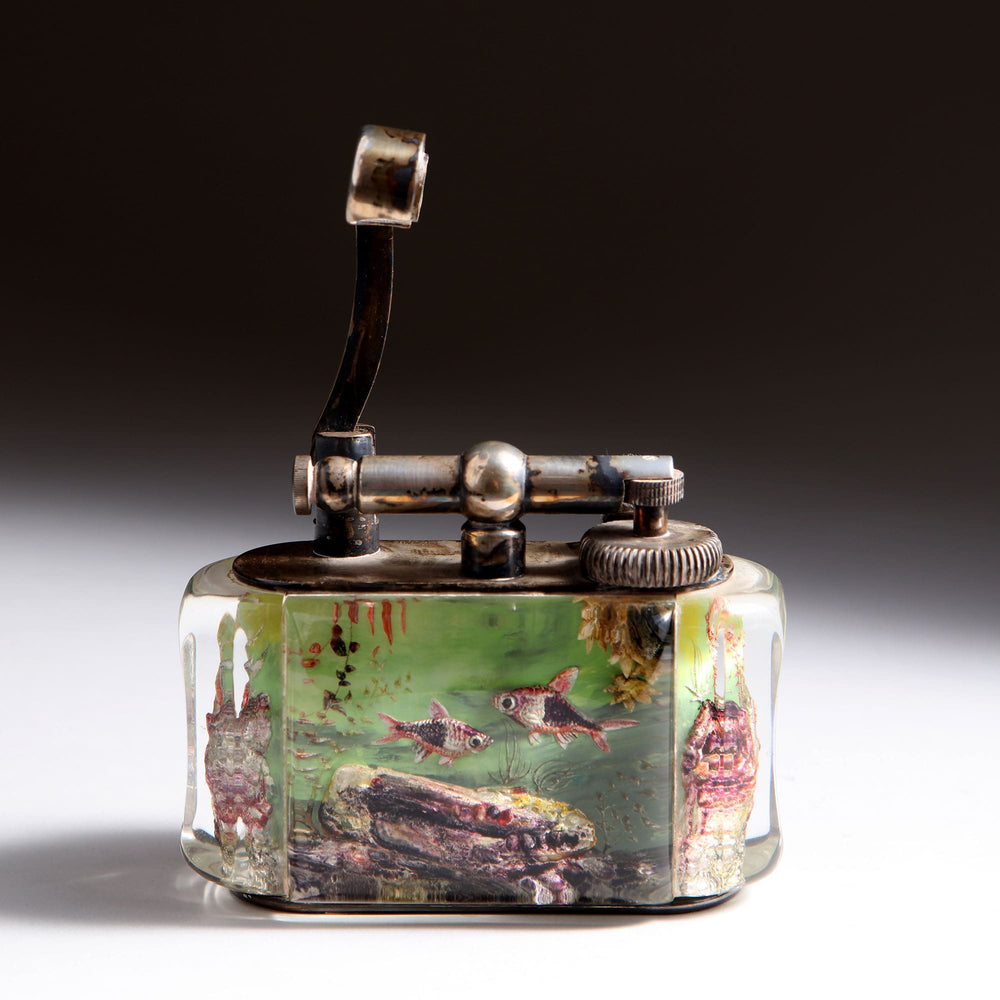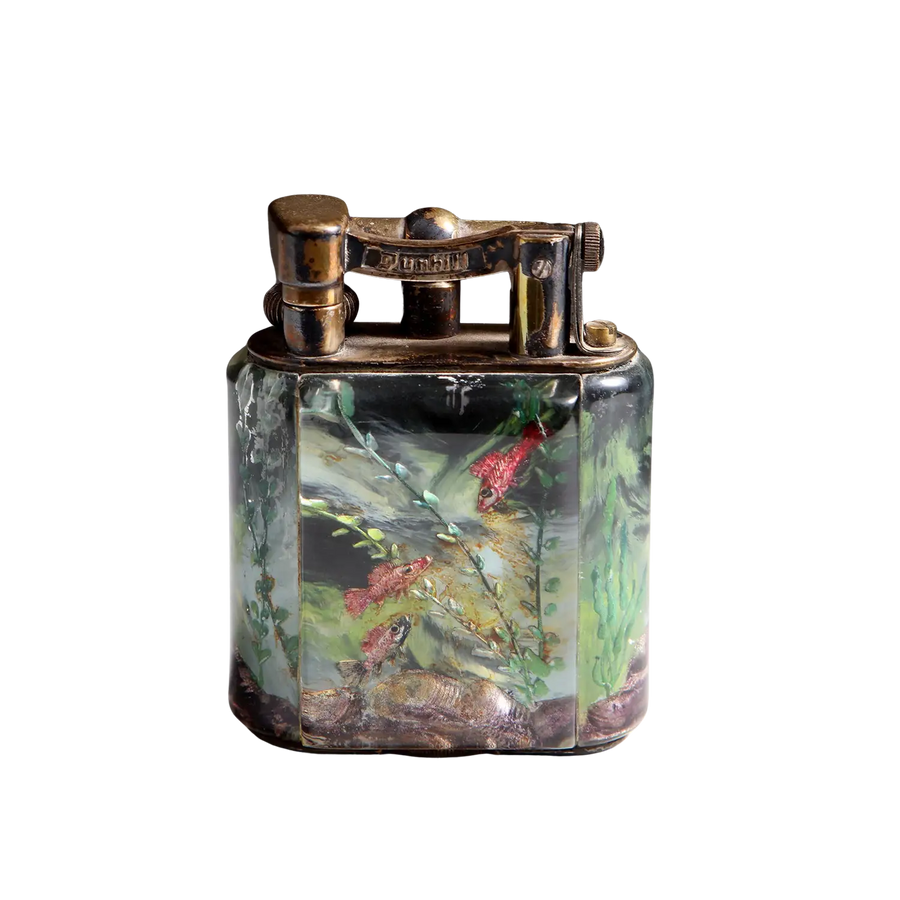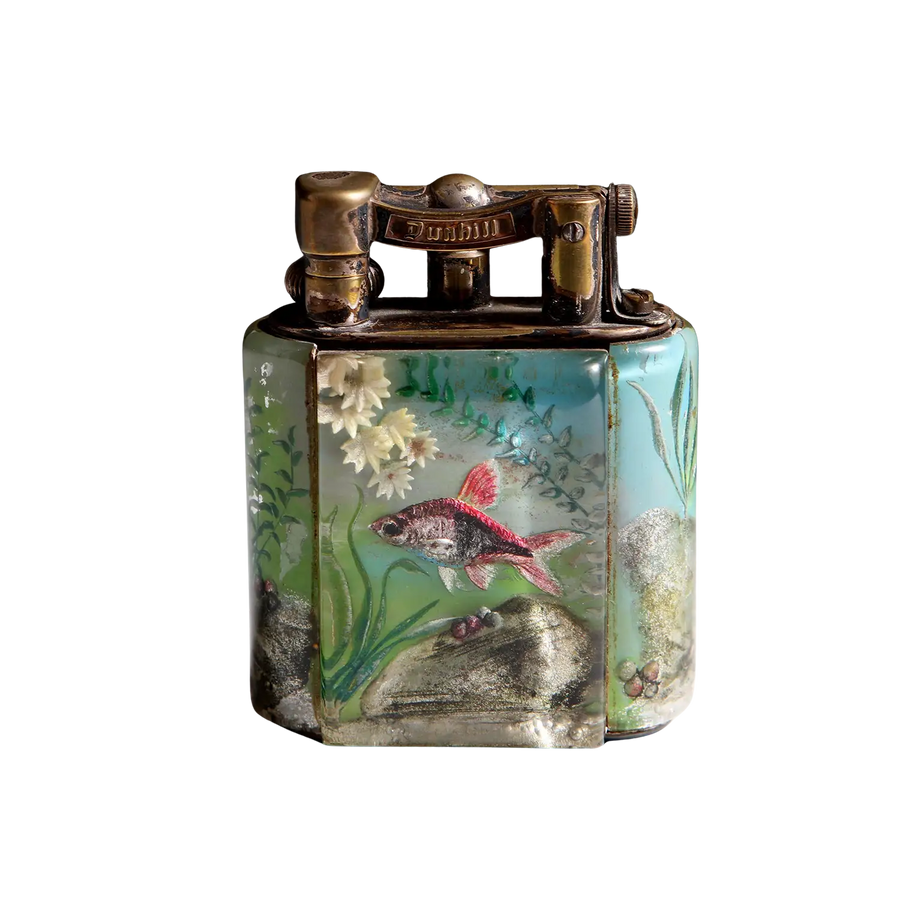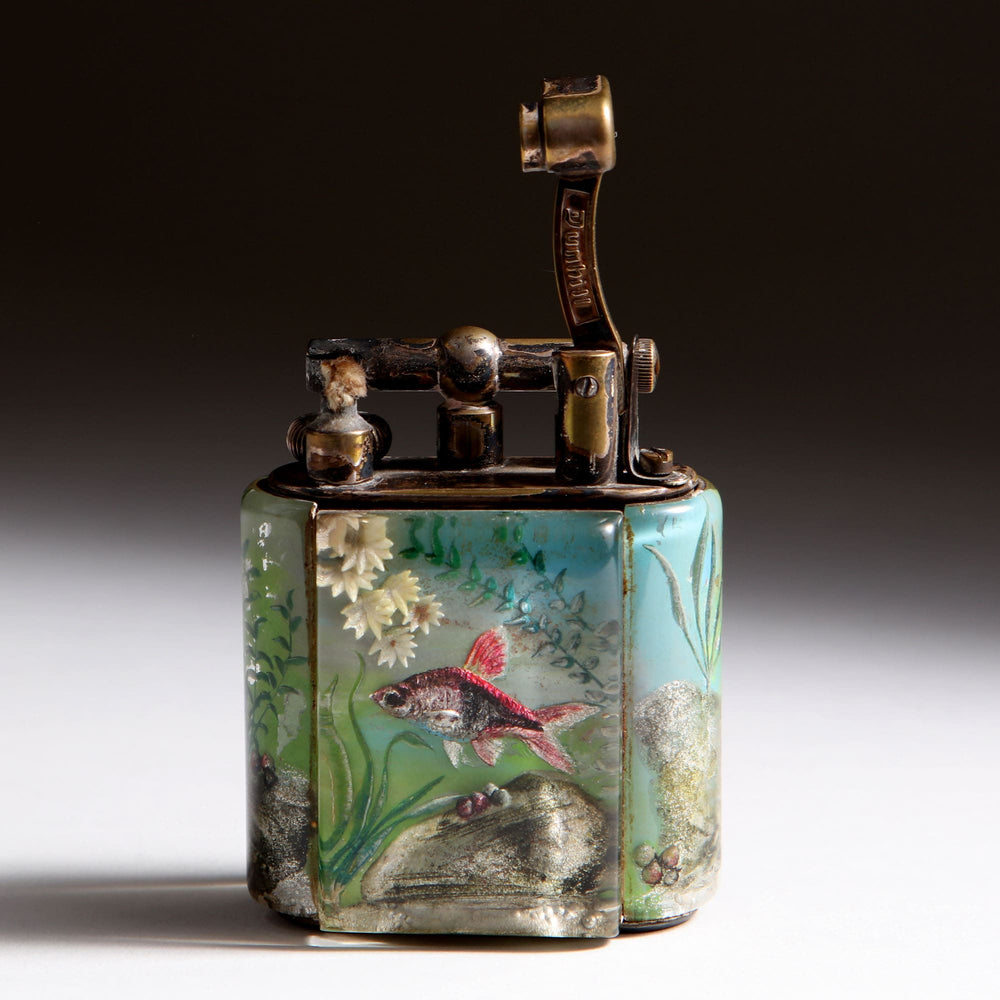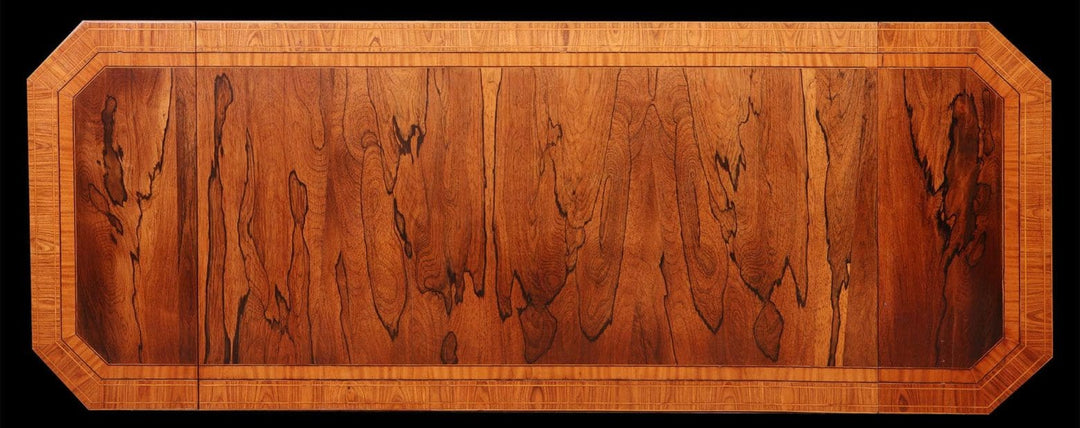
Ben Shillingford’s contribution to the world of luxury collectibles through his work on the Dunhill Aquarium Table Lighters is both fascinating and unique. After World War II, Shillingford — a master engraver — joined Dunhill and brought with him an extraordinary skill set that transformed the design and appeal of the table lighter.
From 1949, he began carving and painting lucite panels into miniature aquatic scenes. Using dental tools and drills, he created reverse intaglios which were then delicately painted and attached in four sections to the lighter’s body. The result was an object that combined functionality with artistry, elevating the humble lighter into a collectible work of art.
Crafting the Aquariums
Produced between 1949 and 1959, the Dunhill Aquarium Lighters quickly gained a reputation for their originality and charm. No two were alike. Shillingford’s scenes featured tropical fish, historic ships, sporting events, and more — each panel alive with intricate detail. Later, Margaret and Allan Bennett joined him in producing these works, expanding the range of themes and finishes. Lighters were fuelled with petrol, offered in different sizes and metal cases, and each carried its own distinct personality.
The Medium of Lucite
Lucite, the clear acrylic developed during WWII for aircraft canopies, proved the ideal medium. Durable and resistant to yellowing, it provided the perfect canvas for Shillingford’s creativity. His work, often less vibrant but more restrained than the Bennetts’ later designs, remains distinguished by its meticulous craftsmanship and sense of quiet artistry.
Legacy and Collectability
The Aquarium Lighters represent more than decorative luxury: they embody a post-war era when design objects were valued for their power to enchant as well as their utility. With Shillingford’s retirement, the production of these pieces ended — his skillset too singular to replace.
Today, Dunhill Aquarium Lighters are highly prized by collectors worldwide. They are sought not only for their beauty and rarity, but also as enduring symbols of an age when craftsmanship and imagination could transform even the most everyday object into a timeless treasure.





